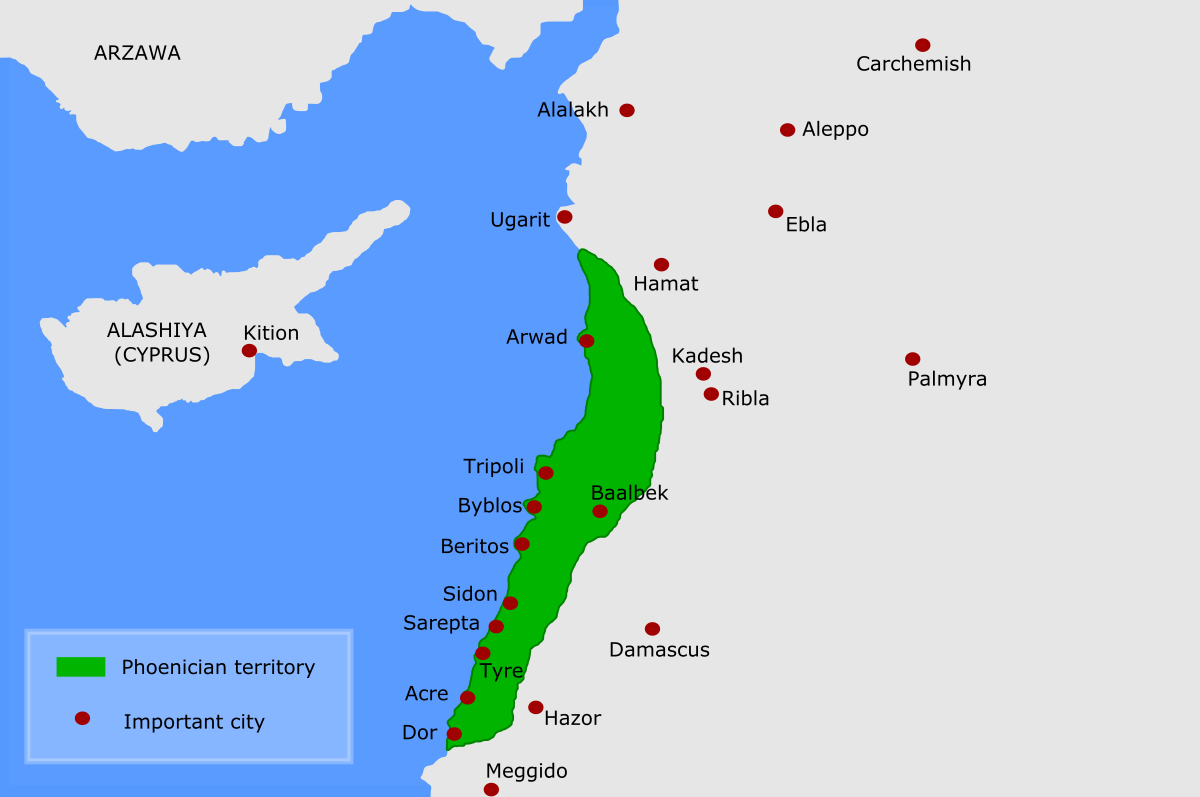Far less well known than the Hittites and still posing many unsolved problems are the Hurrians of Mitanni and the upper Chabur River. Like the Hittites, the Hurrians had an Indo-European ruling class and worshiped some Indo-European deities. Their great importance was to act as intermediaries between the civilization of Mesopotamia and the less advanced peoples to the north and west, especially the Hittites.
The deserts of Syria gave rise to a number of Semitic peoples who from time to time invaded the valley societies. The Akkadians themselves as well as the Amorites had done the same. But there remained behind other Semitic peoples who never penetrated into the valleys and who created societies of their own along the Syrian coast of the Mediterranean and in its hinterland.
At Ugarit on the coast-where the northern portion was called Phoenicia-archaeologists in 1929 found the royal palace of a Canaanite state that flourished between 1400 and 1200 B.C., complete with cuneiform tablets in the northwest Semitic tongue of Ugaritic. They contained the archives of official correspondence, including a treaty with the Hittites written in Akkadian and showing that the Canaanites were under Hittite domination. There were also poems, including an epic about a hero named Kret, who was granted a son by divine favor and who went to recapture his bride from the fortress of a king who had spirited her away.
At Ugarit, an eastern Mediterranean culture developed ties with both the Hebrews and the Greeks. Still, Ugarit was only one of many Canaanite city-states, and it went down in the general chaos caused by the Sea Peoples’ invasion. Among the invading Sea Peoples were the Indo-European Philistines, who settled to the south of the Canaanites and gave their name to Palestine.
The Canaanites practiced human sacrifice and religious prostitution. The supreme god was El, whose name simply means god and about whom little is known. Baal, on the other hand, whose name means lord, was a storm god. Baal and his wife Astarte, symbolized the seasons and cyclical fertility.
After 1300 the Phoenicians flourished along the coast south of Ugarit (in what is now Lebanon). They carried on a brisk trade with the western Mediterranean, founding Citium on Cyprus and Carthage (modern Tunis) as colonies. They brought their Semitic tongue (Punic) more than halfway to the Straits of Gibraltar.
Perhaps most important, the Phoenicians possessed a genuine alphabet, and they exported it. Unlike cuneiform, which was a collection of signs that stood for entire syllables, the Phoenician alphabet consisted of a system of signs that stood for the sounds of the human voice. This made possible the elimination of syllabic characters and pictographic writing. At some point in the midst of the period of Phoenician growth, which ran from 1000 to 750 B.C., the Greeks began to draw upon this language and in the eighth century developed their own alphabet. From the Greek alphabet would, in time, come the Latin alphabet, which in turn would become the alphabet for most of Western civilization.

